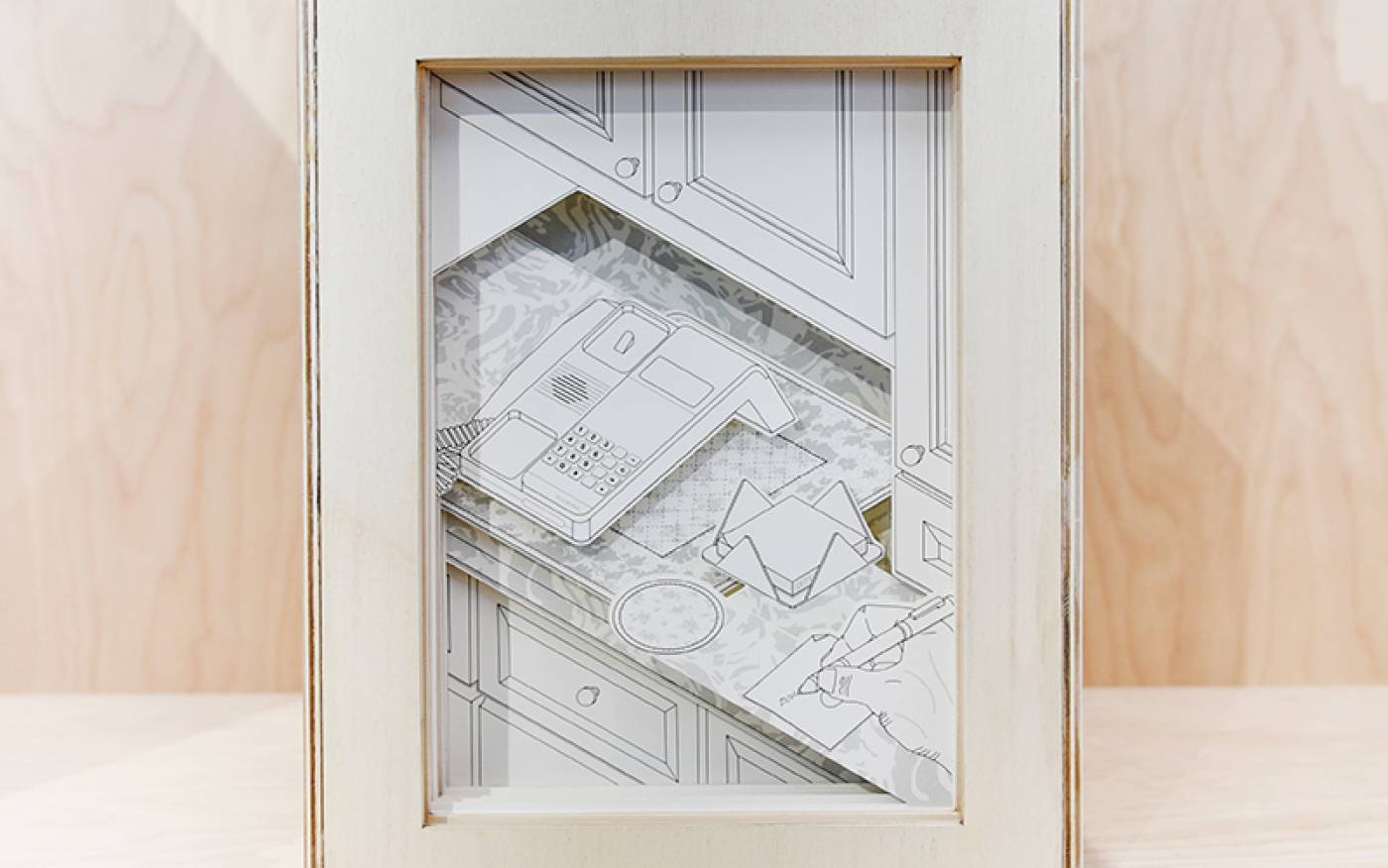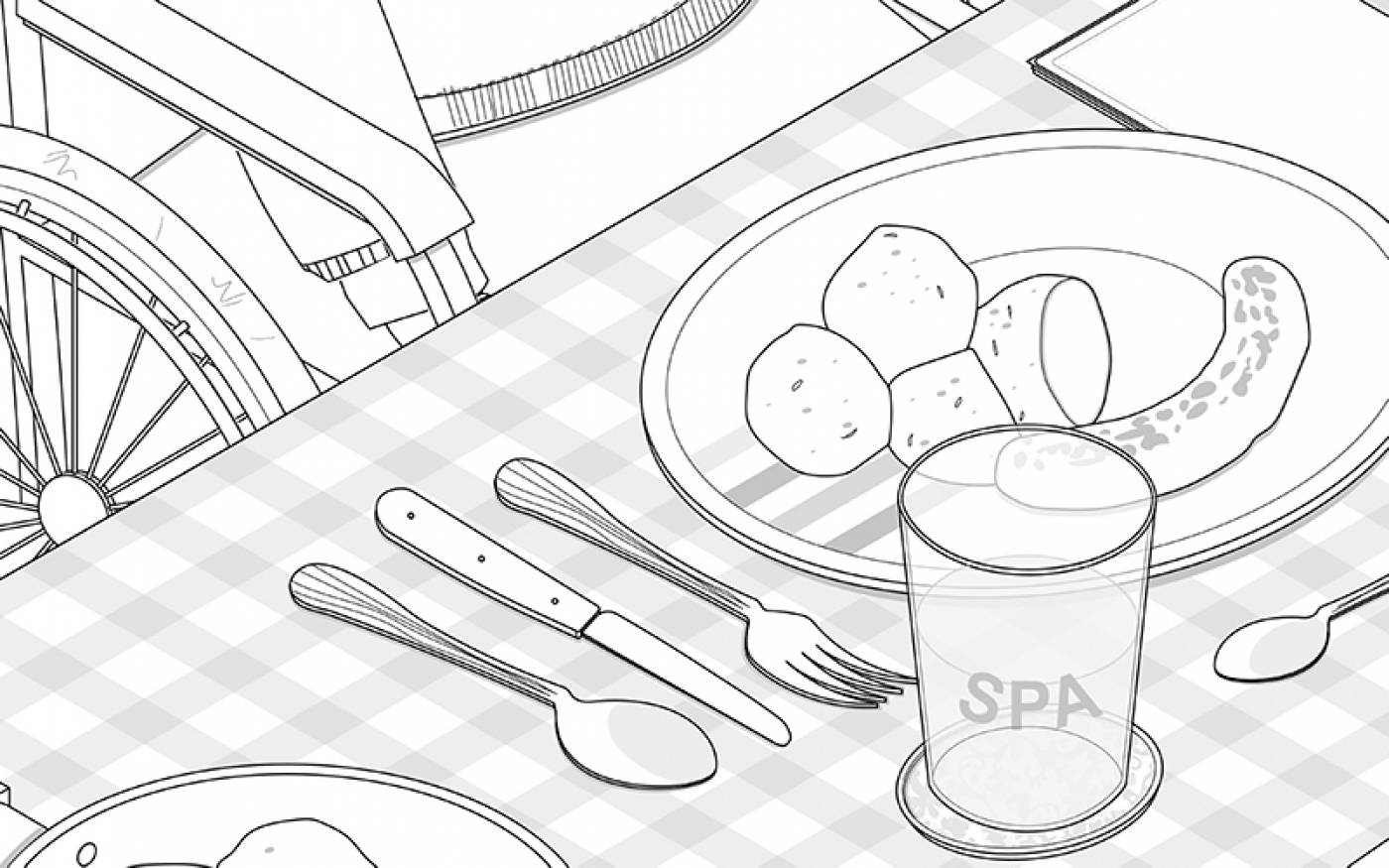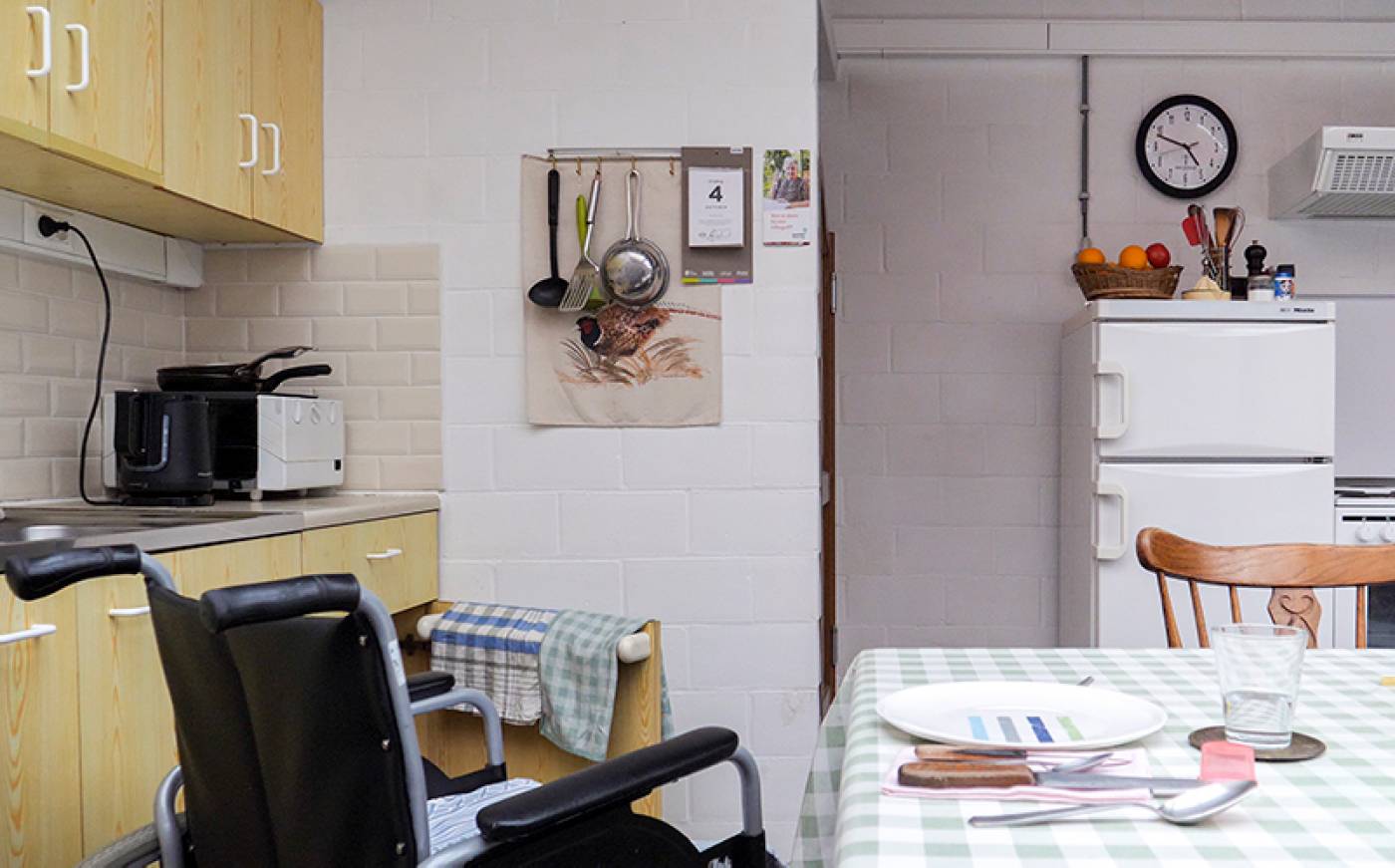Dieuwke Cappaert
Dieuwke’s research critically investigates the ageing of cognition, specifically our spatial memory. Her work questions the institutional wisdom that often exists when conceiving of sites for older people. Through the concept of a memory palace and the method of layered isometric mapping, it visually unpacks relationships between memory, storytelling and spatial curation.
Dieuwke uses her grandfather’s house as a site to explore spatial authorship as an essential part of his self-care and independence. His memory palace is graphically reproduced in a sample box housing seemingly banal inventories of domestic objects. When sequenced and narrated, they reveal the significance in the organisational specificity of objects on site. The sample box visually amplifies existing spatial tactics to make sense of how older people think spatially and organise life in ways that aid memory.
The work challenges genericism in the design of contemporary homes for older people and the instability this can cause. It seeks to embed the challenges of older people in conventional design practices, thinking beyond the marginalised ageing figure as a problem to be ‘solved’, instead recognising them as the author of their surroundings.



- Images
1. An organizational sample box of spatial memory. Dieuwke Cappaert, 2019
2. Unpacking a memory palace. Dieuwke Cappaert, 2019
3. Tracing space through still images in my grandfather’s house. Dieuwke Cappaert, 2019
 Close
Close

